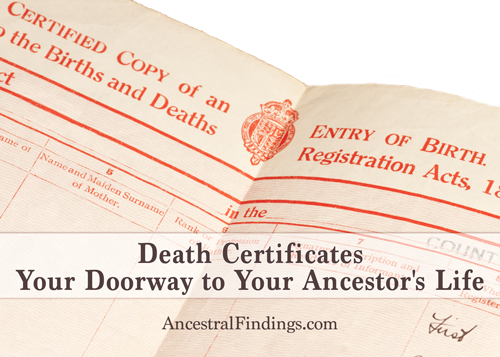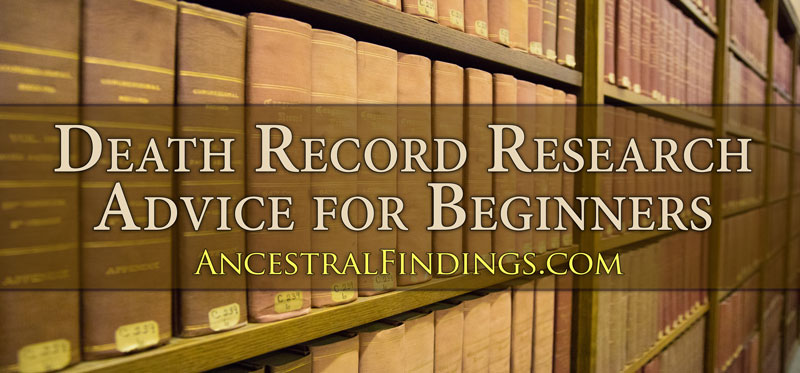When one is beginning one’s genealogy research, the typical things one starts looking at, after talking to living elderly relatives, are the three basic types of vital records. These are birth, death, and marriage records. Each type of record can provide a wealth of information on a person and their family (though this is not always the case, as it all depends on how knowledgeable the person was who filled out the record, or what information they were willing to share). This article gives you a closer look at death certificates, and what type of information you may find on them.
Like most vital records in the United States, it was not until the late 1800s to early 1900s that most states began requiring births, deaths, and marriages to be recorded at the state government level. So, it is unlikely you will find an actual, official death certificate that was created before then. If you go back farther in time, you will have to look at other sources besides official certificates for the type of information you would like to find on them.
If you do find an actual, official death certificate for an ancestor, you may be in genealogical goodness, as they can contain a wealth of genealogical information, even more so than birth and marriage records. This is what you will typically find on a death certificate.
The Date of Birth: The month, day, and year a person was born is often recorded on a death certificate. This is wonderful information if you didn’t previously have it, or only had a partial date of birth for someone.
The Place of Death: This will let you know where a person was living at the time they crossed to the other side, often even with a street address. This is wonderful for tracing their footsteps and for searching for other ancestors who may have lived in the same place or same area of the town or county.
The Marital Status and Occupation: This is good information to have in order to help you learn more about your ancestor as a human being. If you didn’t know the marital status, you will know to look for a marriage record if it says the person was married, or had been.
The Names of the Parents: This is the holy grail of death certificate information for genealogists who did not know the names of the parents. Certificates often also include the place of birth of the parents, as well, and even the maiden name of the mother. Of course, the availability and accuracy of this information depends on the person who filled out the form.
The Cause of Death: Usually only available on older death certificates unless you’re a close relative, this provides interesting humanizing genealogical information on an ancestor’s life, and may also provide clues to conditions in your family that are hereditary.
The Place of Burial: If the person was buried (and not cremated or buried at sea), the name of the cemetery will be on the certificate. There may or may not be a headstone there, but you will now have the name of a place where you can go look for one.
The Informant: This is the name of the person who supplied the information on the certificate. It is usually a close relative, such as a parent or child, but not always. The informant’s name gives you clues to family relationships and friendships, and may even give you an additional person or branch of the family you can add to your research.




